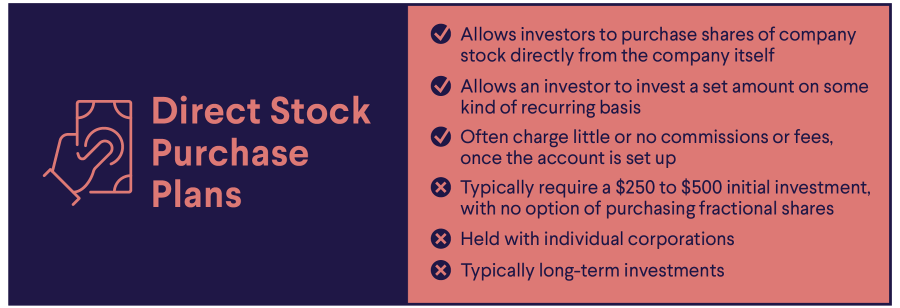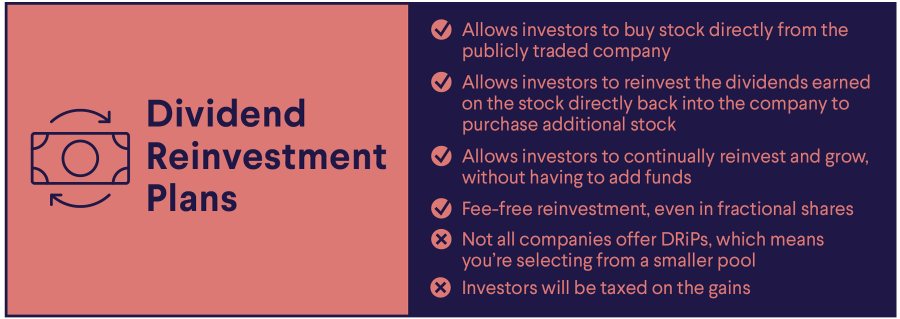Day Trading Strategies for Beginners
Day trading is a type of active trading where an investor buys and sells stocks or other assets based on short-term price movements. Day trading is often thought to differ from a buy-and-hold strategy typically used by long-term investors.
With day trading, the investor is not necessarily looking for assets that will make money over the long-term. Instead, a day trader seeks to generate short-term gains.
Investors should know, though, that day trading is an incredibly risky strategy and there’s a high chance of losing money.
Key Points
• Day trading involves buying and selling assets within short time frames to capitalize on price fluctuations, differing significantly from long-term investment strategies.
• Various day trading strategies include technical analysis, swing trading, momentum trading, and scalping, each employing distinct methods to achieve short-term profits.
• Successful day traders prioritize liquidity, volatility, and high trading volume, enabling rapid execution of trades while minimizing potential losses from price swings.
• Risk management is crucial in day trading; investors should only risk capital they can afford to lose and remain disciplined to avoid emotional decision-making.
• Understanding trading costs, tax implications, and regulations is essential for day traders to navigate the complexities of the market and optimize their strategies.
What Is Day Trading?
Day trading incorporates short-term trades on a daily or weekly basis in an effort to generate returns. The Securities and Exchange Commission (SEC) says that “day traders buy, sell and short-sell stocks throughout the day in the hope that the stocks continue climbing or falling in value for the seconds or minutes they hold the shares, allowing them to lock in quick profits.”
A long-term investor, conversely, may buy a stock because they think that the company will grow its revenue and earnings, creating value for itself and the economy. Long-term investors believe that that growth will ultimately benefit shareholders, whether through share-price appreciation or dividend payouts.
A day trader, on the other hand, likely gives little credence to whether a company represents “good” or “bad” value. Instead, they are concerned with how price volatility will push an asset like a stock higher in the near-term.
Day trading is a form of self-directed active investing, whereby an investor attempts to manage their investments and outperform or “beat” the stock market.
Recommended: A User’s Guide to Day Trading Terminology
7 Common Day Trading Strategies
Some common types of day trading strategies that you may want to research include technical analysis, scalping, momentum, swing trading, margin and so on. Here’s a closer look at them.
1. Technical Analysis
Technical analysis is a type of trading method that uses price patterns to forecast future movement. A general rule of thumb in investing is that past performance never guarantees future results. However, technical analysts believe that because of market psychology, history tends to repeat itself.
Support and resistance are price levels that traders look at when they’re applying technical analysis. “Support” is where the price of an asset tends to stop falling and “resistance” is where the price tends to stop climbing. So, for instance, if an asset falls to a support level, some may believe that buyers are likely to swoop in at that point.
2. Swing Trading
Swing trading is a type of stock market trading that attempts to capitalize on short-term price momentum in the market. The swings can be to the upside or to the downside and typically from a couple days to roughly two weeks.
Generally, a swing trader uses a mix of fundamental and technical analysis to identify short- and mid-term trends in the market. They can go both long and short in market positions, and use stocks, ETFs, and other market instruments that exhibit volatility.
3. Momentum Trading
Momentum trading is a type of short-term, high-risk trading strategy. While momentum trades can be held for longer periods when trends continue, the term generally refers to trades that are held for a day or several days, on average.
Momentum traders strive to chase the market by identifying the trend in price action of a specific security and extract profit by predicting its near-term future movement. Looking for a good entry point when prices fall and then determining a profitable exit point is the method to momentum trading.
4. Scalp Trading
In scalp trading, or scalping, the goal of this trading style is to make profits off of small changes in asset prices. Generally, this means buying a stock, waiting for it to increase in value by a small amount, then selling it. The theory behind it is that many small gains can add up to a significant profit over time.
5. Penny Stocks
Penny stocks — shares priced at pennies to up to $5 apiece — are often popular among day traders. However, they can be difficult to trade because many are illiquid. Penny stocks aren’t typically traded on the major exchanges, further increasing potential difficulties with trading. Typically, penny stocks sell in over-the-counter (OTC) markets.
6. Limit and Market Orders
There are types of orders that day traders quickly become familiar with. A limit order is when an investor sets the price at which they’d like to buy or sell a stock. For example, you only want to buy a stock if it falls below $40 per share, or sell it if the price rises to over $60. A limit order guarantees a particular price but does not guarantee execution.
With a market order, you are guaranteed execution but not necessarily price. Investors get the next price available at that time. This price may be slightly different than what is quoted, as the price of that underlying security changes while the order goes through.
7. Margin Trading
Margin accounts are a type of brokerage account that allows the investor to borrow money from the broker-dealer to purchase securities. The account acts as collateral for the loan. The interest rate on the borrowed money is determined by the brokerage firm.
Trading with this borrowed money — called margin trading — increases an investor’s purchasing power, but comes with much higher risk. If the securities lose value, an investor could be left losing more cash than they originally invested.
In the case that the investor’s holdings decline, the brokerage firm might require them to deposit additional cash or securities into their account, or sell the securities to cover the loss. This is known as a margin call. A brokerage firm can deliver a margin call without advance notice and can even decide which of the investor’s holdings are sold.
Best Securities For Day Trading
Day traders can work across asset classes and securities: company stocks, fractional shares, ETFs, bonds, fiat currencies, cryptocurrencies, or commodities like oil and precious metals. They can also trade options or futures — different types of derivatives contracts.
But there are some commonalities that day-trading markets tend to have, including liquidity, volatility, and volume.
Liquidity
Liquidity refers to how quickly an asset can be bought and sold without causing a significant change in its price. In other words, how smoothly can a trader make a trade?
Liquidity is important to day traders because they need to move in and out of positions quickly without having prices move against them. That means prices don’t move higher when day traders are buying, or move down when they’re starting to sell.
Volatility
Market volatility can often be considered a negative thing in investing. However, for day traders, volatility can be essential because they need big price swings to potentially capture profits.
Of course, volatility could mean big losses for day traders too, but a slow-moving market typically doesn’t offer much opportunity for day traders.
Volume
High stock volume may indicate that there is a lot of interest in a security, while low volume can indicate the opposite. Elevated interest means there’s a greater likelihood of more liquidity and volatility — which are, as discussed, two other characteristics that day traders look for.
💡 Quick Tip: When you’re actively investing in stocks, it’s important to ask what types of fees you might have to pay. For example, brokers may charge a flat fee for trading stocks, or require some commission for every trade. Taking the time to manage investment costs can be beneficial over the long term.
Day Trading Basics — How to Get Started
Before starting to day trade, some investors set aside a dollar amount they’re comfortable investing — and potentially losing. They need to figure out their personal risk tolerance, in other words.
Getting the hang of day trading can take some time, so newbie day traders may want to start with a small handful of stocks. This will be more manageable and give traders time to hone their skills.
Recommended: How Many Stocks Should I Own?
Good day traders can benefit from staying informed about events that may cause big price shifts. These can range from economic and geopolitical news to specific company developments.
Here’s also a list of important concepts or terms every prospective day trader should know.
1. Trading Costs
If you’re utilizing day trading strategies, it’s wise to consider the cost. Many major brokerage firms accommodate day trading, but some charge a fee for each trade. This is called a transaction cost, commission, mark up, mark down, or a trading fee. Some firms also charge various other fees for day trading or trading penny stocks.
Some platforms are specifically designed for day trading, offering low-cost or even zero-cost trades and a variety of features to help traders research and track markets.
2. Pattern Day Trader
A pattern day trader is a designation created by the Financial Industry Regulatory Authority (FINRA). A brokerage or investing platform will classify investors as pattern day traders if they day trade a security four or more times in five business days, and the number of day trades accounts for more than 6% of their total trading activity for that same five-day period.
When investors get identified as pattern day traders, they must have at least $25,000 in their trading account. Otherwise, the account could get restricted per FINRA’s day-trading margin requirement rules.
3. Freeriding
In a cash account, an investor must pay for the purchase of a security before selling it. Freeriding occurs when an investor buys and then sells a security without first paying for it.
This is not allowed under the Federal Reserve Board’s Regulation T. In cases where freeriding occurs, the investor’s account may be frozen by the broker for a 90-day period. During the freeze, an investor is still able to make trades or purchases but must pay for them fully on the date of the trade.
4. Tax Implications of Trader vs Investor
The IRS makes a distinction between a trader and an investor. Generally, an investor is someone who buys and sells securities for personal investment. A trader on the other hand is considered by the law to be in business. The tax implications are different for each.
According to the IRS, a trader must meet the following requirements below. If an individual does not meet these guidelines, they are considered an investor.
• “You must seek to profit from daily market movements in the prices of securities and not from dividends, interest, or capital appreciation;
• Your activity must be substantial; and
• You must carry on the activity with continuity and regularity.”
5. Capital Gains Taxes
Another important tax implication to note is that the IRS differentiates between short-term and long-term investments for capital gains tax rates. Generally, investments held for over a year are considered long-term and those held for under a year are short-term.
While long-term capital gains may benefit from a lower tax rate, short-term capital gains are taxed at the same rate as ordinary income.
A capital loss occurs when an investment loses value. In certain circumstances, when a capital loss exceeds a capital gain, the difference could potentially be applied as a tax deduction. Some brokerages may also offer automated tax loss harvesting as a way to strategically offset investment profits.
6. Wash Sale Rule
While capital losses can sometimes be taken as a tax deduction, there are certain regulations in place to prevent investors from abusing those benefits. One such regulation is the wash sale rule, which says that investors cannot benefit from selling a security at a loss and then buy a substantially identical security within the next 30 days.
A wash sale also occurs if you sell a security and then your spouse or a corporation you control buys a substantially identical security within the next 30 days.
Get up to $1,000 in stock when you fund a new Active Invest account.*
Access stock trading, options, alternative investments, IRAs, and more. Get started in just a few minutes.
Which Day Trading Strategy Is Best for Beginners?
There’s no single answer that’s going to be correct for every trader. But investors might want to stick to the simpler strategies to get a hang of day trading. For instance, they could take a try at technical analysis to try and determine which trades may end up being profitable. Or, they could stick with swing trades to test the waters, too.
Perhaps the most important thing to keep in mind is that day trading is, as mentioned, incredibly risky.
💡 Quick Tip: How do you decide if a certain trading platform or app is right for you? Ideally, the investment platform you choose offers the features that you need for your investment goals or strategy, e.g., an easy-to-use interface, data analysis, educational tools.
Best Times to Day Trade
As mentioned, day traders seek high liquidity, volatility and volumes. That’s why when it comes to stocks, the first 15 minutes of the trading day, after the equity market opens at 9:30am, may be one of the active stretches for day traders.
The stock market tends to be more volatile during this time, as traders and investors try to figure out the market’s direction and prices react to company reports or economic data that was released before the opening bell. Volume also tends to pick up before the closing bell at 4pm.
For futures, commodities and currencies trading, markets are open 24 hours so day traders can be active around the clock. However, they may find less liquidity at night when most investors and traders in the U.S. aren’t as active.
Day Trading Risk Management
The SEC issued a stern warning regarding day trading in 2005, and that message still holds value today. They noted that most people do not have the wealth, time, or temperament to be successful in day trading.
If an individual isn’t comfortable with the risks associated with day trading, they shouldn’t delve into the practice. But if someone is curious, here are some steps they can take to manage the risks that stem from day trading:
1. Try not to invest more than you can afford. This is particularly important with options and margin trading. It’s crucial for investors to understand how leverage works in such trading accounts and that they can lose more than they originally invested.
2. Investors and traders often benefit from tracking and monitoring volatility. One way to do this is by finding one’s portfolio beta, or the sensitivity to swings in the broader market. Adjusting one’s portfolio so it’s not too sensitive to sweeping volatility may be helpful.
3. Day traders often benefit from picking a trading strategy and sticking with it. One struggle many day traders contend with is avoiding getting swept up by the moment and deviating from a plan, only to lock in losses.
4. Don’t let your emotions take the driver’s seat. Fear and greed can dominate investing and sway decisions. But in investing, it can be better to keep a cool head and avoid reactionary behavior.
Is It Difficult To Make Money Day Trading?
While it may feel like it’s easy to make a couple of lucky moves and turn a profit from some trades, it isn’t easy to make money day trading. Again, it’s very, very risky, and new traders would do well not to assume they’re going to make any money at all. That said, there are professional traders out there, but they use professional-grade tools and experience to help inform their decisions. New traders shouldn’t expect to emulate a professional trader’s success.
Test your understanding of what you just read.
The Takeaway
Day trading involves making short-term stock trades in an effort to generate returns. It can be lucrative, but is extremely risky, and prospective traders would likely do well to practice and learn some tools of the trade before giving it a shot. They’ll also want to closely consider their risk tolerance, too.
Again, while stock investing can be an important way to build wealth for individuals, it’s crucial however to know that the consequences of risky day trading can be catastrophic. Investors need to be disciplined, cautious and put in the time and effort before delving into day trading strategies.
Ready to invest in your goals? It’s easy to get started when you open an investment account with SoFi Invest. You can invest in stocks, exchange-traded funds (ETFs), mutual funds, alternative funds, and more. SoFi doesn’t charge commissions, but other fees apply (full fee disclosure here).
FAQ
What is day trading and how does it differ from other trading strategies?
Day trading involves making short-term trades with stocks or other securities in an effort to make a profit. Other strategies may involve longer-term investments, which are not bought and sold on a daily or weekly (or monthly) basis.
Are there any risk management techniques specific to day trading strategies?
Traders can do many things to try and limit their risks, and that can include working with different brokers or platforms, incorporating thinking patterns or rituals before making trades, setting up stop-losses, and diversifying their portfolios.
Are day trading strategies suitable for all types of markets, such as stocks, forex, or cryptocurrencies?
Day trading can be done in many asset classes and markets, which can include stocks, forex, and even crypto. But each asset is different, and the markets may not behave the same ways, either. As such, traders may want to do some homework before jumping in.
How much capital is typically required to implement day trading strategies?
It’s generally recommended that traders start with at least $25,000 in their brokerage accounts before day trading.
Are there any specific timeframes or market conditions that are more favorable for day trading strategies?
Perhaps the best times of the day for day traders are immediately after the markets open, and shortly before they close. There may also be more market action on certain days of the week (Mondays, for instance) which create good conditions for day traders.
SoFi Invest®
INVESTMENTS ARE NOT FDIC INSURED • ARE NOT BANK GUARANTEED • MAY LOSE VALUE
1) Automated Investing and advisory services are provided by SoFi Wealth LLC, an SEC-registered investment adviser (“SoFi Wealth“). Brokerage services are provided to SoFi Wealth LLC by SoFi Securities LLC.
2) Active Investing and brokerage services are provided by SoFi Securities LLC, Member FINRA (www.finra.org)/SIPC(www.sipc.org). Clearing and custody of all securities are provided by APEX Clearing Corporation.
For additional disclosures related to the SoFi Invest platforms described above please visit SoFi.com/legal.
Neither the Investment Advisor Representatives of SoFi Wealth, nor the Registered Representatives of SoFi Securities are compensated for the sale of any product or service sold through any SoFi Invest platform.
For a full listing of the fees associated with Sofi Invest please view our fee schedule.
Financial Tips & Strategies: The tips provided on this website are of a general nature and do not take into account your specific objectives, financial situation, and needs. You should always consider their appropriateness given your own circumstances.
Claw Promotion: Customer must fund their Active Invest account with at least $50 within 30 days of opening the account. Probability of customer receiving $1,000 is 0.028%. See full terms and conditions.
SOIN0723118 Read more













